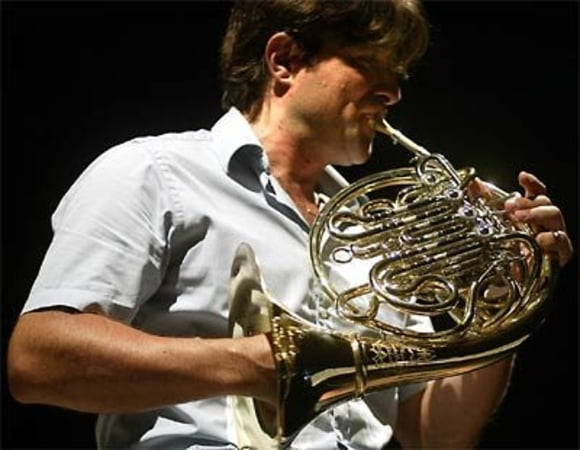3. Construction and features
A vibrating column of air
All wind instruments produce sound through a vibrating air column inside the instrument. The player blows into the mouthpiece of the instrument through their tightened, vibrating lips. The tongue acts as a valve that controls the attack and the length of the notes. The fundamental rule is: The bigger the instrument, the longer the air column and the lower the pitch. The smaller the instrument, the shorter the air column and the higher the pitch. The harder the player blows into the instrument, the higher the volume.
The horn’s brass tube is wound in a circular shape with a diameter of approximately 32.5 cm. Its first section has a narrow, cylindrical cross section. The large bell follows a parabolic curve and opens up to a diameter of about 30.5 to 31 cm. The mouthpiece is shaped like a narrow funnel, which forms a conical extension of the mouth of the main tube. The three valves are usually operated by the index, middle and ring fingers of the left hand, while the little finger stabilizes the instrument in a hook or ring. Modern horns have an additional valve (called the stopping valve), which serves to counteract the raise in pitch caused by the stopping technique.

Horn players playing, gripping, hand-stopping the instrument
What are the valves for?
All pitches of the harmonic series are playable without using the valves. Although the partials are closely spaced in the higher range (and quite hard to play), diatonic or even chromatic playing wouldn’t be possible without the valves.
The three valves of the horn are used to lower the fundamental pitch by a half step (2nd valve), whole step (1st valve) or even three half steps (3rd valve). When a valve is depressed, the air stream is diverted through the corresponding loop, which results in a longer overall length of the tube and air column. This makes it possible to reach all chromatic pitches. This mechanism was invented in the late 18th century and allows for very fluent and elegant playing, which prompted composers of the time to write virtuoso horn parts (e.g. Beethoven’s last symphony, Dvorak’s concerto for cello, Bruckner’s Symphony No. 4).


